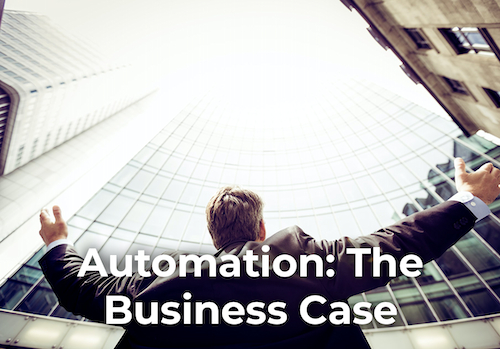Perhaps you’ve seen your competition pull ahead. Maybe your customers have become frustrated with their experience as they interact with your systems. Possibly, you’ve even experienced a security breach. You know your legacy systems need to move into the 21st century, and perhaps you’re struggling to decide how to move forward. Whether you want to face it or not, now is the time to take a hard look at modernizing your digital infrastructure.
 According to salesforce.com, “while there may be a multitude of reasons for a business to undergo digital transformation, it mostly boils down to survival. Digital transformation can be risky and expensive, so it’s often a necessity for businesses that want to survive and outlast the ones that failed to evolve.”
According to salesforce.com, “while there may be a multitude of reasons for a business to undergo digital transformation, it mostly boils down to survival. Digital transformation can be risky and expensive, so it’s often a necessity for businesses that want to survive and outlast the ones that failed to evolve.”
And then there’s the expense: Daniel Newman at The Future of Work suggests that as much as 80 percent of an IT budget can be spent on maintenance. Modernizing legacy systems—even incrementally—can help a company see its capabilities leap forward by using the cloud to integrate automation into standard business processes. John Brandon at techradar.com suggests that “some of the most disruptive technologies—such as machine learning, voice bots like Amazon Alexa, and artificial intelligence—are helping to automate mundane tasks and improve how a business runs.”
These technologies run on data. In this new era of computing, the businesses that truly succeed will be the ones that put an emphasis on their data. If they haven’t already, legacy systems with limitations on their data will fall behind, especially when introducing machine learning and AI into the mix. At the same time, the data and infrastructure that have kept older systems going for so long can’t just be switched off, and freezing the systems as teams write and develop its replacement will push customers away.
Modernization effectively overcomes these risks to your organization by opening up the possibilities that an older codebase wasn't designed to handle.
“Taking inventory of what still works and what doesn’t allows companies to identify which processes are no longer relevant,” writes Newman. “Only applications deemed critical to business are then modernized; the others are simply retired, saving time and money on maintenance.”
When you decide to replace or reconfigure your legacy system, you can decide between any of these modernization options:
New Application Development. Replicate your legacy system by writing entirely new code. Your team will manually develop your new system using current coding practices with modern interfaces, and support for current technologies. This option is very expensive option, and it’s generally only usable to set a baseline for future development. You’ll incur expenses that can be as high as the original project, risk levels are similar to a typical “waterfall” project, and there are high likelihoods of time and budget overruns.
Extend/Surround. Many organizations currently opt for this method. The development teams or consultants encapsulate the legacy system in coding containers that provide APIs and tack-on integration with other systems. While the solution may work, you will have a patchwork of code, often in multiple programming languages, that gradually increases technical debt and incurs added maintenance costs. While this situation defers replacement, it will likely be costly in the long run.
COTS/SaaS. Both common off-the-shelf (COTS) solutions or cloud-based SaaS systems enable you to migrate to a less expensive and more modern architecture, but costs can easily escalate. The new system will require customization and ongoing licensing costs. Such a migration could create ripple effects on other systems and cause you to incur other costs from conforming to a completely new platform with unknown attributes.
Automated Modernization. A careful translation of code by a team of expert external engineers creates a new, modern application based upon the logic and behavior of the original. The process will include varying degrees of automation, which increases accuracy while decreasing costs. Modernization will likely incur the least risk and expense of any of these options.
Replacement of aging systems is becoming increasingly urgent, and as programmers of many of these older systems retire, replacement costs will continue to rise. An automated modernization program will likely yield the least expensive and most flexible alternative for stable, long-term performance.
-----
TSRI is Here for You
As a leading provider of software modernization services, TSRI enables technology readiness for the cloud and other modern architecture environments. We bring software applications into the future quickly, accurately, and efficiently with low risk and minimal business disruption, accomplishing in months what would otherwise take years.
Get started on your modernization journey today!
Standish Group, “Modernization: Clearing a Pathway to Success,” 2010

